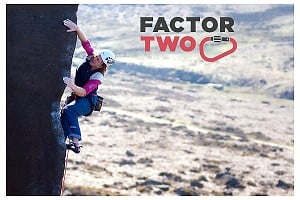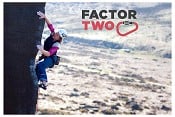In reply to notaverygoodclimber:
Clipping the quickdraw to the gear or bolt doesn't really need any physical practice, it's so easy.
It can however be wise to be mindful of which way this leaves the gate on the rope clip crab facing, in relation to which direction you will climb above, so that if you fall the rope is less likely to fall accross the gate and become unclipped with worrying consequences.
So if the route deviates left from the gear, best have the gates facing right (.? Someone please correct me if wrong, finding it hard to visualise now, haven't climbed for 4 months!)
Also, you want to be care ful not to backclip, and not to z-clip. Even if by yourself for autobelay, your wall staff can explain /remind you about these. You can practice these 2, i.e. not doing them, on autobelay, or top-rope, by having a few metres of cut rope length tied into your harness, to use as a pretend lead rope... clip each quickdraw, practicing clipping from reaching at arms length to the gear, and also try clipping some when level. When level and even more so clipping from just above them is worth a go too, as it's a bit more faff, and will help you realise this will have you panicking a bit at the crag if (getting pumped and reach for higher better?! holds to finish clipping the rope from) you do it .
There's a knack to clipping the rope which makes it look effortless, and it's worth practicing on autobelay / toprope, to feel confident that you aren't going to mess it up, especially when you get into pumpy situations and the hanging on to place gear or quickdraws and pull the rope can add substantial endurance requirements.
Also worth bearing in mind that clipping from below the qhickdraws, on the first 2 or 3 bolts, if you fall off with your slack to clip pulled out before you clip, you are more likely to come closer to / hit the ground, than if you clip when almost level / level with it, as discussed in a thread somewhere a few months ago.
Post edited at 12:10









